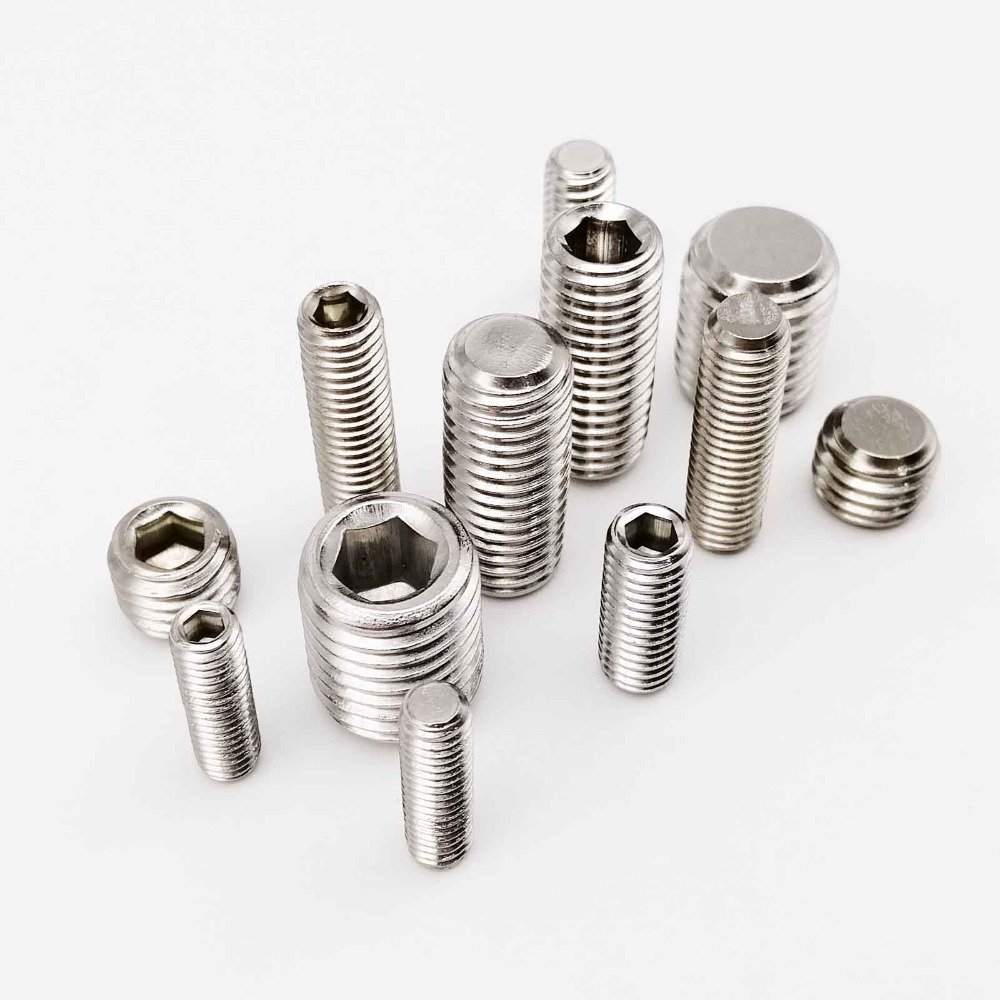
When it comes to fasteners, it’s essential to choose the right type for the specific application. Among the wide range of fasteners available, screws are probably the most versatile and widely used. Within the category of screws, there are numerous specialized types, including set screws. Understanding the difference between set screws and standard screws is crucial in ensuring the structural integrity and functionality of your assemblies. In this article, we will delve into the differences between set screws and regular screws in terms of design, function, applications, and more.
Design and Physical Attributes
Set Screws:
Set screws are typically headless, meaning they do not have a protruding head. The entire body of a set screw is threaded, and one end may have a point of various shapes (e.g., cup, cone, flat, dog, or oval point). The opposite end usually has a hexagonal socket that accommodates an Allen wrench for installation.
Regular Screws:
In contrast, regular screws have a head that sits above the surface of the material when installed. The head may be of various shapes, such as flat, round, pan, or hexagonal, and includes a drive (e.g., slotted, Phillips, or Torx) that engages with a screwdriver or drill bit. The shank may be partially or fully threaded.
Functional Differences
Set Screws:
Set screws are primarily used to secure one object within another. For example, they are often used to fix a pulley or gear to a shaft. When a set screw is tightened, it exerts a compressive force on the object (e.g., a shaft), preventing relative motion between the object and the part into which the set screw is installed.
Regular Screws:
Regular screws, on the other hand, are designed to hold objects together by being threaded into a hole and exerting a clamping force that presses the screw head against the surface of the material. They are used in a vast array of applications including construction, woodworking, metalworking, and assembling products.
Applications
Set Screws:
Set screws are commonly found in applications where space is limited, and where you need to secure an object without having a protrusion above the surface. They are widely used in mechanical devices such as motors and gear assemblies.
Regular Screws:
Regular screws have an immense range of applications. From building houses to assembling furniture, securing components in electronic devices, or fastening covers, regular screws are ubiquitous.
Removal and Adjustment
Set Screws:
Because set screws often do not have heads, they can be more difficult to remove once set into place, especially if they become stripped or stuck.
Regular Screws:
Regular screws are generally easier to remove or adjust due to the accessibility of their heads. They are designed to be inserted and removed multiple times if necessary.
Material and Size Considerations
Both set screws and regular screws come in various materials including stainless steel, carbon steel, brass, and more. The choice of material is usually dictated by the application and environment. Similarly, both types of screws come in various sizes. However, set screws tend to be used in smaller, precision applications more often than regular screws.
Conclusion
While both set screws and regular screws are essential components in engineering and construction, they serve different purposes. Set screws are ideal for securing objects inside other objects and are often used in mechanical applications. Regular screws are versatile fasteners used to hold materials together through clamping force. Selecting the appropriate type of screw for your project is paramount to ensuring the efficacy and durability of the assembly.
